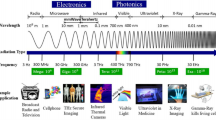Abstract
This paper considers a multi-pair two-way relay system with multi-antenna users and proposes a low-complexity optimal spatial channel pairing (SCP) strategy at the relay station (RS) for such a system. The proposed SCP scheme, following the BD-like beamformer at RS, pairs the uplink spatial subchannels of each user pair with the corresponding downlink spatial subchannels by maximizing sum-rate (Max-SR). Furthermore, a new mathematical inequality (arrangement inequalities of a product) is developed and applied to obtain sufficient and necessary conditions for achieving Max-SR-SCP. This also yields a simple low-complexity implementation of the proposed SCP in contrast to the NP-hard complexity of the original Max-SR-SCP problem. Simulation results illustrate that the proposed Max-SR-SCP achieves substantial sum-rate gains over other pairing schemes.
摘要
针对多用户对双向中继无线网络中块对角化波束成形算法, 设计一种低复杂度最大化和速率的空间信道配对方法。 所提出最大化和速率方案, 以最大化系统和速率为代价函数, 在中继站将每个用户上行链路的空间子信道与其相应的下行链路的空间子信道进行最优配对。 为了推导最优信道配对方法的闭合表达式, 本文提出并证明了一个新的数学不等式定理-连乘排序不等式定理, 并应用该定理证明了最大化和速率空间信道配对方法的充分必要条件, 从而获得该方法的解析公式。 仿真结果表明: 我们提出的最大化和速率空间信道配对方法同其他的空间信道配对方法相比能实现显著的和速率提升。
Similar content being viewed by others
References
Fang Z, Hua Y, Koshy J C. Joint source and relay optimization for a non-regenerative MIMO relay. In: Proceedings of IEEE Workshop on Sensor Array and Multichannel Processing, Waltham, 2006. 12–14
Zhong B, Zhang Z, Zhang X, et al. Impact of partial relay selection on the capacity of communications systems with outdated CSI and adaptive transmission techniques. EURASIP J Wirel Comm, 2013, 2013: 1–13
Cover T, Gamal A E L. Capacity theorems for the relay channel. IEEE Trans Inf Theory, 1979, 25: 572–584
Sendonaris A, Erkip E, Aazhang B. User cooperation diversity. Part I. System description. IEEE Trans Commun, 2003, 51: 1927–1938
Kramer G, Gastpar M, Gupta P. Cooperative strategies and capacity theorems for relay networks. IEEE Trans Inf Theory, 2005, 51: 3037–3063
Nosratinia A, Hunter T E, Hedayat A. Cooperative communication in wireless networks. IEEE Commun Mag, 2004, 42: 74–80
Zhang Q, Shu F, Wang M, et al. Relay selection schemes for precoded cooperative OFDM and their achievable diversity orders. IEEE Signal Proc Lett, 2011, 18: 231–234
Rankov B, Wittneben A. Spectral efficient protocols for half-duplex fading relay channels. IEEE J Sel Area Comm, 2007, 25: 379–389
Knopp R. Two-way wireless communication via a relay station. In: Proceedings of GDRISIS meeting, Paris, 2007
Popovski P, Yomo H. Bi-directional amplification of throughput in a wireless multi-hop network. In: Proceedings of the IEEE VTC-Spring06, Melbourne, 2006. 588–593
Esli C, Wittneben A. One-and two-way decode-and-forward relaying for wireless multiuser MIMO networks. In: Proceedings of IEEE Global Telecommunications Conference (IEEE GLOBECOM08), New Orleans, 2008. 1–6
Amah A U T, Klein A, Silva Y C B, et al. Multigroup multicast beamforming for multiuser two-way relaying. In: Proceedings of International ITG Workshop on Smart Antennas WSA, Berlin, 2009
Yilmaz E, Zakhour R, Gesbert D, et al. Multi-pair two-way relay channel with multiple antenna relay station. In: Proceedings of IEEE International Conference on Communication (ICC), Cape Town, 2010. 1–5
Sun C, Li Y, Vucetic B, et al. Transceiver design for multi-user multi-antenna two-way relay channels. In: Proceedings of IEEE Global Telecommunications Conference (IEEE GLOBECOM10), Miami, 2010. 6–10
Degenhardt H, Klein A. Self-interference aware MIMO filter design for non-regenerative multi-pair two-way relaying. In: Proceedings of IEEE Wireless Communications and Networking Conference (WCNC), Shanghai, 2012. 272–276
Xing C, Li S, Fei Z, et al. How to understand linear minimum mean-square-error transceiver design for multiple-inputmultiple-output systems from quadratic matrix programming. IET Commun, 2013, 7: 1231–1242
Shu F, Lu Y Z, Chen Y, et al. High sum-rate beamformers for multi-pair two-way relay networks with amplify-andforward relaying strategy. Sci China Inf Sci, 2014, 57: 1–11
Huang Y, Li C, Zhong C, et al. On the capacity of dual-hop multiple antenna AF relaying systems with feedback delay and CCI. IEEE Commun Lett, 2013, 17: 1200–1203
Huang Y, Al-Qahtani F, Zhong C, et al. Performance analysis of multiuser multiple antenna relaying networks with co-channel interference and feedback delay. IEEE Trans Commun, 2014, 62: 59–73
Author information
Authors and Affiliations
Corresponding author
Electronic supplementary material
Rights and permissions
About this article
Cite this article
Shu, F., Chen, Y., You, X. et al. Low-complexity optimal spatial channel pairing for AF-based multi-pair two-way relay networks. Sci. China Inf. Sci. 57, 1–10 (2014). https://doi.org/10.1007/s11432-014-5102-z
Received:
Accepted:
Published:
Issue Date:
DOI: https://doi.org/10.1007/s11432-014-5102-z
Keywords
- multipair two-way relay
- spatial channel pairing
- maximizing sum-rate
- arrangement inequalities of product
- relaying station




